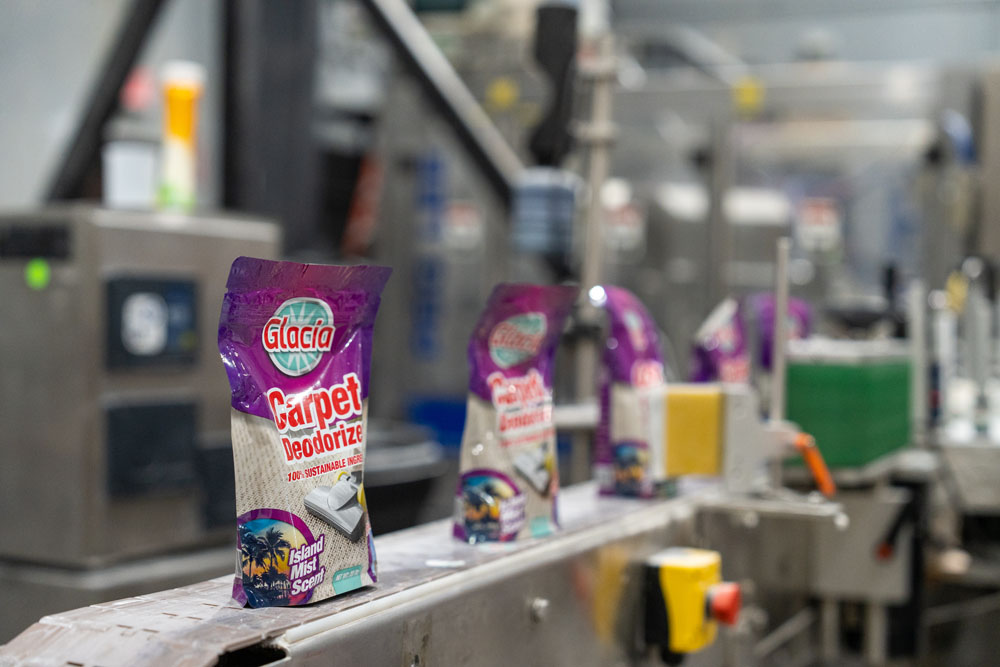Blog
What is Sodium Hydroxide in Industries and Household products?
What is Sodium Hydroxide Mainly Used For?
What is sodium hydroxide mainly used for? Sodium hydroxide, also known as lye or caustic soda, is a highly versatile and widely used chemical. It plays a critical role in many industrial processes and household products. From the manufacturing of soap and paper to its application in cleaning and water treatment, sodium hydroxide is an essential compound in various applications. In this article, we’ll explore the main applications of sodium hydroxide and how it impacts everyday life.

Is Sodium Hydroxide in Soap Safe? Find Out Here!
Industrial Applications of Sodium Hydroxide
One of the primary answers to what is sodium hydroxide mainly used for lies in its widespread industrial applications. Sodium hydroxide is crucial in many manufacturing processes due to its highly reactive and corrosive nature. Here are some key industries where sodium hydroxide is heavily applied:
1. Paper and Pulp Industry
Sodium hydroxide is a vital ingredient in the paper and pulp industry. It is used in the chemical process known as kraft pulping, which helps break down wood chips into pulp. This pulp is then processed to make paper. The alkaline nature of sodium hydroxide allows it to remove lignin, a substance that binds wood fibers together, leaving behind cellulose, which forms the basis of paper. Without sodium hydroxide, the paper-making process would be much less efficient.
2. Soap and Detergent Production
Sodium hydroxide is commonly used in the production of soaps and detergents. In a process called saponification, sodium hydroxide reacts with fats and oils to produce soap. This reaction breaks down triglycerides in oils and fats, resulting in glycerol and fatty acid salts, which we know as soap. The strong alkaline properties of sodium hydroxide make it ideal for producing both solid bars of soap and liquid detergents, giving them the ability to dissolve grease and clean surfaces effectively.
3. Chemical Manufacturing
Another major answer to what is sodium hydroxide mainly used for can be found in chemical manufacturing. Sodium hydroxide is used to produce various chemicals that are then used in other industries. For example:
- Chlorine production: Sodium hydroxide is involved in the electrolysis of saltwater (brine), a process that produces chlorine gas, sodium hydroxide, and hydrogen gas.
- Plastics: Sodium hydroxide is used in the production of certain types of plastics, including polycarbonate and PVC.
- Textiles: It is used to treat cotton fibers, making them easier to dye and process in the textile industry.
Sodium hydroxide is a building block for many other chemicals and compounds used worldwide.
Household Applications of Sodium Hydroxide
While sodium hydroxide is well-known for its industrial applications, it also has practical applications in everyday life. Here’s how what is sodium hydroxide mainly used for applies to household products and tasks:
1. Drain and Oven Cleaners
Sodium hydroxide is the active ingredient in many household cleaners, particularly drain and oven cleaners. Its strong caustic properties allow it to dissolve grease, hair, and other organic materials that often clog drains. For ovens, sodium hydroxide works by breaking down tough, baked-on grease and food particles, making it easier to wipe away.
2. Water Treatment
Sodium hydroxide is used in water treatment facilities to manage the acidity of water and ensure safe drinking water. When added to water, sodium hydroxide raises the pH level, making the water less corrosive to pipes and improving the overall quality of the water supply. This is especially important in areas where water has high levels of acidity, which can lead to pipe corrosion and contamination.
3. Homemade Soap Making
For DIY enthusiasts, sodium hydroxide is a popular ingredient in homemade soap recipes. Its ability to react with oils and fats to form soap makes it essential for those looking to create their own natural soaps. However, due to its corrosive nature, proper handling and safety precautions are necessary when using sodium hydroxide in soap making.
Role of Sodium Hydroxide in Food Processing
A lesser-known but important aspect of what is sodium hydroxide mainly used for is its role in food processing. Sodium hydroxide is approved by the FDA for use in small quantities in food production, where it serves several key functions:
- Peeling fruits and vegetables: Sodium hydroxide is used to soften the skins of fruits and vegetables, making them easier to peel in industrial processing.
- Pretzel making: The golden-brown crust of pretzels is achieved by dipping the dough in a diluted sodium hydroxide solution before baking. This process is known as lye dipping and gives pretzels their distinct texture and flavor.
- Cocoa and chocolate production: Sodium hydroxide helps neutralize the acidity of cocoa beans during processing, improving the flavor and texture of chocolate products.
Follow us Blogspot!
Safety Considerations When Using Sodium Hydroxide
Given its caustic nature, it’s essential to handle sodium hydroxide with care, both in industrial settings and at home. When asking what is sodium hydroxide mainly used for, it’s also important to consider its potential hazards. Sodium hydroxide can cause severe burns if it comes into contact with skin or eyes. Inhalation of sodium hydroxide dust or fumes can irritate the respiratory system. Therefore, always wear protective gloves, eyewear, and a mask when working with sodium hydroxide.
If using sodium hydroxide for cleaning or soap making at home, ensure proper ventilation and keep it out of reach of children and pets. Always follow product instructions and safety guidelines.
Conclusion: What is Sodium Hydroxide Mainly Used For?
In summary, what is sodium hydroxide mainly used for? Sodium hydroxide is a highly versatile chemical with a broad range of applications, from industrial processes like paper production, soap making, and chemical manufacturing to household applications such as cleaning and water treatment. It even plays a role in food processing, where it helps with peeling, flavor enhancement, and texture improvements. While it offers many benefits, it’s important to handle sodium hydroxide carefully due to its corrosive properties.

